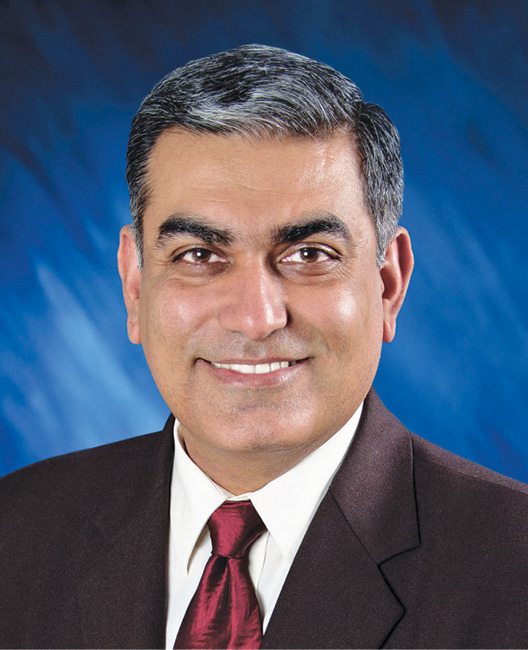Thanks to the world of mobiles, sleeker laptops and tablets, use cases of Wi-Fi and Bluetooth being used simultaneous are becoming very common now. This interaction takes a look at the broad trends in the wireless communication technology. Rajiv Kapur, managing director, Broadcom India, speaks with Dilin Anand of EFY

Q. Broadcom recently released chips for 5G Wi-Fi and Bluetooth Smart. Should the designer of an Internet of Things (IoT) product consider a single standard wireless chip or a multi-standard one?
A. Not only are these sleek devices becoming thinner and smaller, you can no longer take the radio of both, keep it separate and shield it from each other. Also, no longer are these being used one at a time; these are being used simultaneously. That means you are on a Bluetooth headset while you are also streaming something on Wi-Fi.
What chip vendors like us have done to stay ahead is to integrate Wi-Fi and Bluetooth on the same silicon and invest in the radio frequency (RF) side to make the co-existence simultaneous and non-interfering. While integration makes additional features cheaper, a key point remains that you only take what you need. The IoT application decides whether you need one or two or more connectivity solutions.
Q. What drives adoption of near field communication technology (NFC) in consumer electronics space?
A. NFC was earlier misunderstood to be a payments topic. There is another use case of NFC, which is called tap-and-share or tap-and-pair.
Consider the following: I take my phone and tap it on my TV, and this simple tapping helps pair the two devices, instead of the complexity of Bluetooth pairing.
Q. How is this technology shaping up for the automotive market?
A. The reason it is now playing a role in automotive is because of mobiles that are starting to adopt NFC. Computers and mobiles have picked up Wi-Fi and Bluetooth and are now starting to pick up NFC.
It is hard for other devices to ignore the fact that these will have to communicate with a mobile or a computer. So, the de facto standard will be one of these three. And automotive is picking NFC because an automobile can have multiple people sitting in it and NFC is more convenient.
Q. What exciting trends do you see in connected cars?
A. The most interesting trend is the whole universe of Ethernet that had previously been outside the car. There is a lot happening based on Ethernet, which includes video surveillance, video conferencing, audio streaming and data movement, among others.
The purpose is to leverage the universe of Ethernet to give better vehicles. For example, the rear camera can be an Ethernet based camera.
We actually invented how Ethernet can be distributed over thin cables. It is a standard now but we invented it.
Q. Any other emerging trends you see in wireless communication technology?
A. Technology has been simplified enough to make it implementable by everybody. For example, when Nike first came out with the shoe that has Bluetooth talking to your iPhone, they came to us because this was a use case implementation that required us to invest in making sure it worked. We are constantly implementing improved solutions—sometimes in software and sometimes hardware—to keep evolving the use of that technology.
The IoT is a great example. We are pushing Bluetooth and Wi-Fi standards and implementations to be IoT friendly, to consume lower power and be easier to use.
Q. What is holding back the telecommunications tower technology in India?
A. Mobile backhaul is one of the weaker links. You can throw more users at the base transceiver station (BTS) and upgrade the BTS accordingly so as to not hit any bottlenecks. In India, 90 per cent of mobile towers are still connected wirelessly. If you can wire-connect it, the capacity is high, and it is not the bottleneck anymore. But there is a limit to how much you can connect with wire.
We keep complaining about call drops. This is actually one of the resulting effects of bottlenecks. It depends on implementation and in our case, a higher-capacity backhaul is needed.
Do you like this article? You may also like: click here









